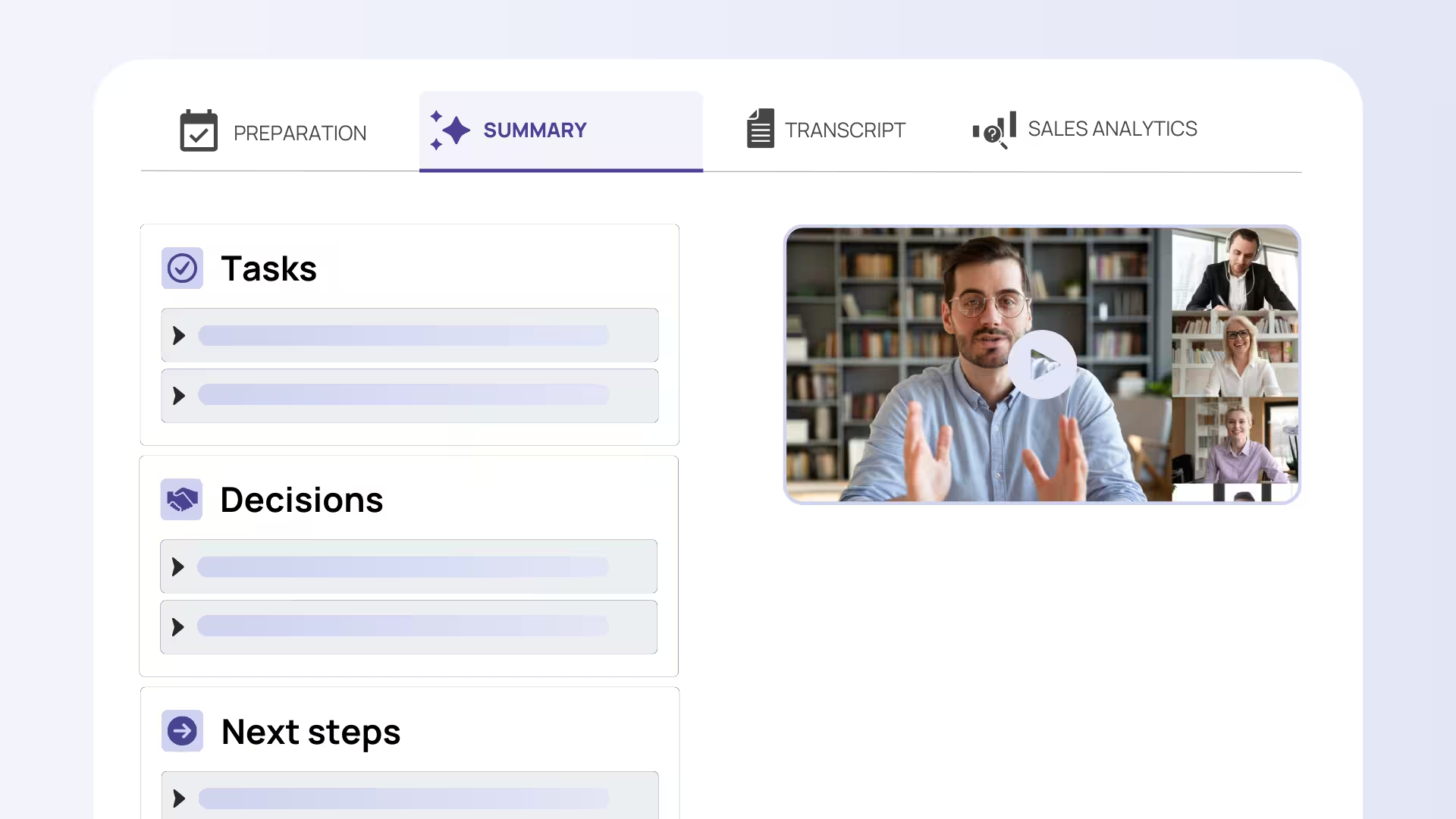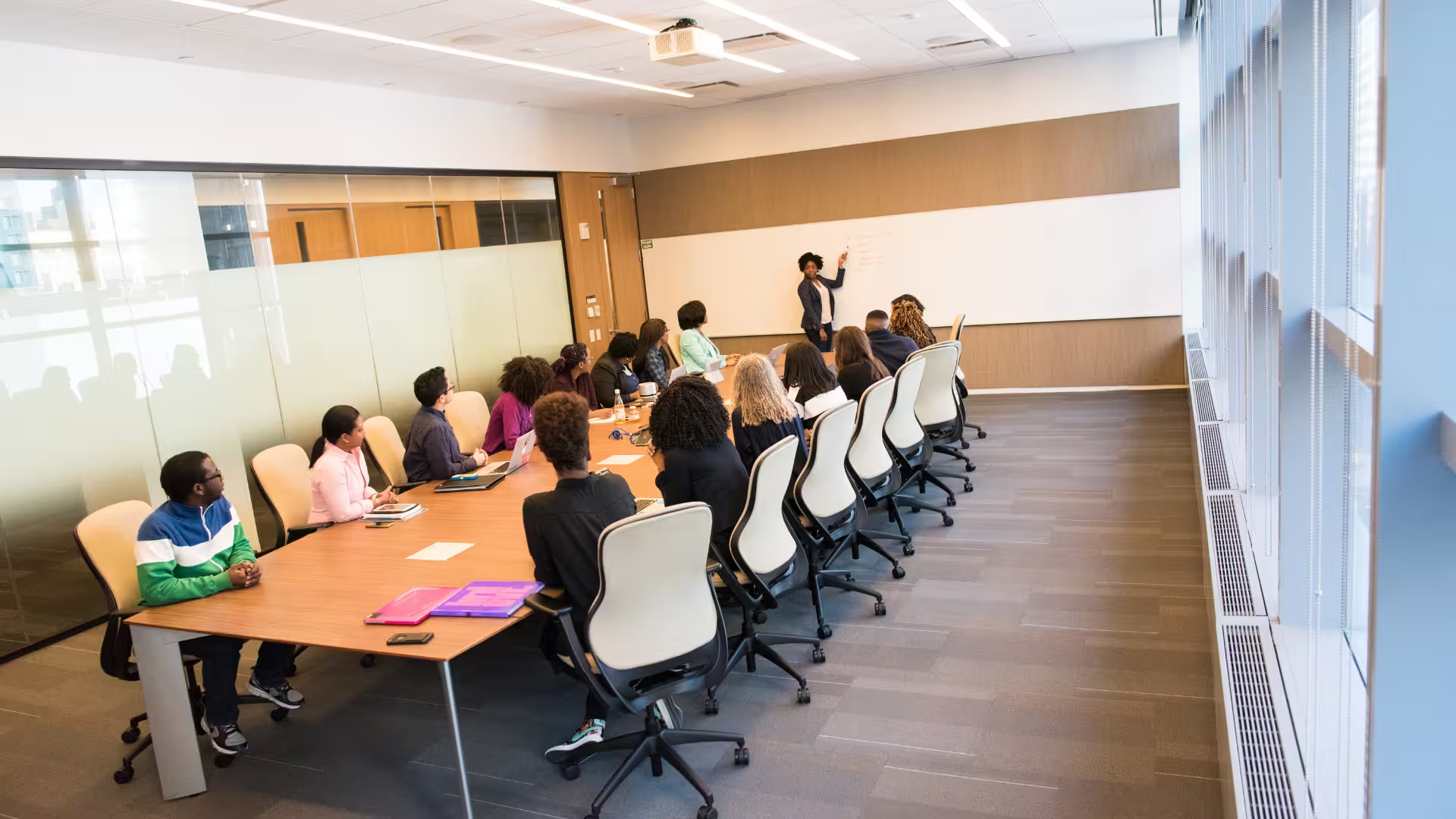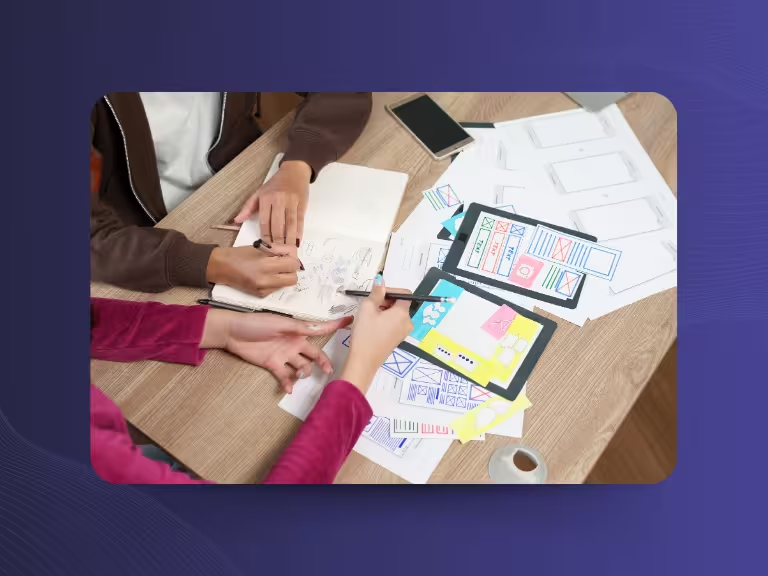Table of Contents
Innovation doesn't happen by accident. It emerges from structured creative processes that transform scattered thoughts into breakthrough solutions. An ideation session is your team's gateway to unlocking collective creativity and turning complex challenges into actionable opportunities.
Think of ideation sessions as organized brainstorming with a purpose. Unlike casual coffee conversations about "what if," these structured workshops create the perfect environment for creative problem-solving and collaborative innovation. When done right, they generate ideas that actually move your business forward.
This guide will walk you through everything you need to know about planning, facilitating, and evaluating ideation sessions that deliver real results. You'll discover proven techniques, learn how to handle common challenges, and understand how to transform raw ideas into implementation-ready solutions.
Understanding Ideation Session: Definition and Objectives
What Is an Ideation Session?
An ideation session is a structured process where teams generate, refine, and select ideas to address specific problems or opportunities. It's the bridge between identifying a challenge and implementing a solution.
What makes ideation sessions different from casual brainstorming? Structure, goals, and inclusivity. While brainstorming often feels loose and unfocused, ideation sessions follow clear frameworks designed to maximize creative output. They're goal-oriented, time-bound, and deliberately inclusive of diverse perspectives.
In the innovation lifecycle, ideation sessions serve as crucial turning points. They take your team from "we have a problem" to "here are our best solutions to explore." This structured approach ensures that creative energy translates into actionable outcomes.
Key Objectives of Ideation Sessions
Every successful ideation session aims to achieve several key objectives that drive innovation forward.
First, they foster creativity by encouraging participants to think outside conventional boundaries. When people feel safe to share unconventional ideas, breakthrough solutions emerge. Second, they promote collaboration among cross-functional teams, bringing together diverse expertise that no single person could provide.
Ideation sessions also encourage lateral and divergent thinking. Instead of following linear problem-solving paths, participants explore multiple angles simultaneously. This approach expands the idea pool and increases the likelihood of finding innovative solutions.
Most importantly, these sessions generate actionable ideas that can be prioritized and developed further. They establish a psychologically safe environment where unrestricted idea sharing becomes natural, leading to more honest and creative contributions.

Preparing for a Successful Ideation Session
Setting Clear Goals and Defining the Problem Scope
Preparation determines whether your ideation session produces breakthrough ideas or wasted time. Start by articulating a focused problem statement or opportunity area. Vague problems generate vague solutions.
For example, instead of "improve customer experience," try "reduce customer support response time from 4 hours to 1 hour while maintaining solution quality." This specificity gives participants a clear target for their creative energy.
Align your session objectives with broader project or organizational goals. When participants understand how their ideas connect to larger business outcomes, they contribute more strategically.
Selecting the Right Participants and Building Diversity
The right mix of participants can make or break your ideation session. Cross-functional teams bring diverse perspectives that spark innovative thinking. Include representatives from different departments, experience levels, and thinking styles.
Balance participant expertise, roles, and seniority carefully. Too many senior leaders might inhibit open sharing, while too many junior members might lack implementation insight. Aim for 6-12 participants as a guideline – small enough for everyone to contribute meaningfully, large enough for diverse perspectives.
Consider including external stakeholders or customers when appropriate. Their outside perspective often reveals blind spots that internal teams miss.
Creating the Ideal Environment
Your physical or digital environment significantly impacts creative output. For in-person sessions, choose spaces that feel different from typical meeting rooms. Natural light, comfortable seating, and wall space for posting ideas help creativity flow.
Essential materials include whiteboards, sticky notes, markers, and flip charts. For digital sessions, platforms like Miro, MURAL, or Stormboard provide collaborative canvases where remote teams can work together effectively.
Establish ground rules early: timing expectations, turn-taking protocols, and respect for all contributions. These guidelines create psychological safety that encourages bold idea sharing.
Introducing Digital Tools for Remote and Hybrid Sessions
Digital ideation tools have revolutionized how teams collaborate creatively. Modern platforms offer real-time editing, voting systems, timers, and anonymous submission features that can actually enhance participation compared to in-person sessions.
Tools like Sally can enhance session productivity by automatically capturing and transcribing discussions, ensuring no valuable ideas get lost in the creative chaos. Having an AI meeting assistant handle documentation allows facilitators to focus entirely on guiding the creative process.
Digital tools also enable asynchronous ideation, where team members can contribute ideas before, during, and after scheduled sessions. This flexibility accommodates different thinking styles and time zones.

Conducting the Ideation Session: Techniques and Facilitation
Proven Ideation Techniques to Spark Creativity
Different techniques unlock different types of creative thinking. Classic brainstorming encourages open idea generation without judgment, while brainwriting or silent brainstorming reduces dominance and increases equal participation.
Structured exercises provide frameworks for systematic creativity. Crazy 8s involves rapid sketching to generate eight visual ideas in eight minutes, forcing participants to think quickly and visually. SCAMPER guides thinking through seven lenses: Substitute, Combine, Adapt, Modify, Put to another use, Eliminate, and Reverse.
The Six Thinking Hats method has participants examine problems from multiple perspectives – logical, emotional, creative, cautious, optimistic, and process-oriented. This ensures comprehensive exploration of each idea.
Mind mapping creates visual connections between related concepts, while rapid prototyping allows teams to explore ideas tangibly through quick mock-ups or models. The key is matching techniques to your specific objectives and participant preferences.
Facilitation Best Practices for Effective Sessions
Great facilitation balances structure with creative freedom. Maintain focus and timing while allowing space for unexpected insights. Use techniques like round-robin sharing or breakout groups to ensure quieter participants contribute meaningfully.
Manage dominant voices diplomatically by redirecting questions to others or using silent techniques that give everyone equal input time. Establish psychological safety through no-judgment rules and positive reinforcement of all contributions.
Record and capture all ideas systematically. Tools like Sally can automatically transcribe sessions and generate summaries, ensuring facilitators can focus on guiding rather than note-taking. This comprehensive capture prevents valuable ideas from being forgotten.
Handling Common Challenges
Every ideation session faces predictable challenges. Disengagement often stems from unclear objectives or participants feeling their input isn't valued. Address this by regularly checking in with quiet participants and acknowledging all contributions.
When conflicts arise, refocus the group on shared objectives rather than individual preferences. Remind participants that ideation is about exploring possibilities, not making final decisions.
Adapt your approach to organizational culture. Hierarchical cultures might need anonymous submission methods, while collaborative cultures might thrive with open discussion formats.
Post-Ideation Activities: Evaluating and Implementing Ideas
Systematic Idea Capture and Organization
The session's end marks the beginning of idea development. Use digital tools or physical methods to cluster and categorize ideas by theme, feasibility, or impact. This organization makes evaluation more systematic and prevents good ideas from getting lost.
Ensure clarity and completeness of captured ideas. If something seems unclear, clarify it immediately while the session is fresh in participants' minds. Incomplete ideas often get discarded unfairly during evaluation.
Evaluation Criteria and Success Metrics
Prioritize ideas based on impact, feasibility, required resources, and alignment with objectives. Create a simple scoring system that evaluates each idea against these criteria consistently.
Measure ideation session success through multiple metrics: quantity and diversity of ideas generated, participant engagement levels through feedback surveys, and percentage of ideas moving to prototyping or implementation.
Amazon's approach focuses on data-driven prioritization, selecting ideas with measurable KPIs. Google's Design Sprints combine ideation with rapid prototyping and testing within five days. IDEO emphasizes human-centered design, ensuring ideas address real user needs.
Next Steps: From Ideas to Action
Transform ideation outcomes into action by assigning specific responsibilities for further development or experimentation. Integrate promising ideas into project pipelines or innovation roadmaps with clear timelines and success metrics.
Communicate results transparently to sustain momentum and motivation. Participants want to know what happened to their ideas, even if they weren't selected for immediate development.

Real-World Examples and Case Studies
Google's Design Sprints demonstrate how ideation sessions can be compressed into intensive five-day workshops that move from problem identification to tested prototypes. This approach proves that structured ideation can accelerate innovation dramatically.
IDEO's human-centered design process shows how empathy-led ideation sessions generate solutions that truly address user needs. Their approach combines ethnographic insights with creative exercises to ensure ideas remain grounded in reality.
Amazon's data-driven approach to idea prioritization demonstrates how systematic evaluation can increase the success rate of implemented ideas. They focus on ideas with measurable KPIs and clear business impact.
Conclusion: Why Effective Ideation Sessions Drive Innovation
Ideation sessions are powerful catalysts for innovation when thoughtfully planned and executed. The difference between successful and unsuccessful sessions lies in structured preparation, skilled facilitation, and thoughtful follow-through.
Remember that measuring success and evolving your ideation practices over time ensures continuous improvement. Each session teaches valuable lessons about what works for your specific team and organizational culture.
Embrace ideation sessions as repeatable tools for continuous innovation rather than one-time events. When teams develop strong ideation capabilities, they become more adaptable, creative, and successful in solving complex challenges.
Consider incorporating digital tools like Sally to enhance session management and documentation. When technology handles the logistics, human creativity can focus on what it does best – generating breakthrough ideas that drive your business forward.

Try meeting transcription now!
Experience how effortless meeting notes can be – try Sally free for 4 weeks.
Test NowOr: Arrange a Demo Appointment

.avif)



